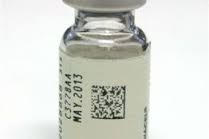 On June 26th 1974, the era of barcoding began when the UPC code was read on a pack of Wrigley’s Juicy Fruit gum at a grocery store in Ohio. During the next 40 years, the use of barcodes has grown to where we see it in every facet of our daily lives including UPC codes on a gallon of milk, QR codes in magazine advertisements, and 2D codes on hospital patient’s wristbands that provides the caregiver with patient data. Over this time, the technology around the barcodes themselves, as well as the hardware, has evolved and continues to evolve today.
On June 26th 1974, the era of barcoding began when the UPC code was read on a pack of Wrigley’s Juicy Fruit gum at a grocery store in Ohio. During the next 40 years, the use of barcodes has grown to where we see it in every facet of our daily lives including UPC codes on a gallon of milk, QR codes in magazine advertisements, and 2D codes on hospital patient’s wristbands that provides the caregiver with patient data. Over this time, the technology around the barcodes themselves, as well as the hardware, has evolved and continues to evolve today.
In many of today’s applications, the amount of data that is required to be contained in the barcode has grown exponentially, which has led to an explosion in the use of 2D barcodes. 2D barcodes offer the benefit of having much more data contained in the barcode, while taking up a smaller footprint. 2D barcodes have proliferated to where they are contained on a variety of products from pharmaceutical bottles, patient ID badges, driver’s licenses and parking validation tickets. One of the challenges the OEM world has faced was the significant cost difference between the 2D and 1D scanning hardware. As recently as a few years ago, a fixed mount 2D scanner was two times the cost of a fixed mount 1D scanner. Today OEMs can implement 2D scan technology in their system at an affordable cost. Adding a 2D scanner to your platform does not render your old technology obsolete, since 2D scanners are able to read all 1D symbologies. Rather it positions your platform to be able to meet not only today’s requirements, but also stay ahead of upcoming changes.
As 2D barcodes have become more commonplace in OEM applications, not only has the amount of data that the barcode can process increased, but the amount of information that the barcode scanner can provide to the host system has also increased. Engineers are finding ways to utilize the technology inherent in 2D barcodes to provide additional value to their systems by increasing throughput and accuracy. For example, a 2D that has auto focus technology utilizes a laser to provide a distance measurement for the scanner to focus. This measurement can also be used for information such as liquid level detection or determining if the target is present or absent.
Wouldn’t it be nice to lower the overall cost of your system by eliminating multiple sensors? Since a 2D barcode reader utilizes CCD imaging technology, you can use the barcode hardware to implement a vision system. For applications such as determining the size and type of test tubes, or looking at the opening on a reagent bottle, a vision system based on a 2D barcode reader can add tremendous flexibility to your system, while lowering cost and improving efficiency and accuracy.
As the technology in every field evolves, there is a heavier burden placed on every part of a system to do more with less. Systems need to be designed with the goals of improving throughput and accuracy, while lowering the overall cost. As barcode technology has continued to evolve, it is helping OEMs to achieve these goals. Design engineers are leveraging the advances in the barcode technology to improve the amount and accuracy of the data available, as well as designing unique applications with the associated technology.
 About the Author
About the Author
 Charles Fisher is Director of Sales of RESCO Electronics, a manufacturer of electronic assemblies and a value added reseller of auto ID equipment . Charles is a seasoned International Sales and Sales management professional with over 20 years in the electronics industry with extensive experience with Auto ID and data collection solutions, wire harness and electro-mechanical manufacturing, and supply chain solutions. During his career Charles has held positions with Milgray Electronics, Bell Industries, All American Semiconductor and Reptron Electronics.
Charles Fisher is Director of Sales of RESCO Electronics, a manufacturer of electronic assemblies and a value added reseller of auto ID equipment . Charles is a seasoned International Sales and Sales management professional with over 20 years in the electronics industry with extensive experience with Auto ID and data collection solutions, wire harness and electro-mechanical manufacturing, and supply chain solutions. During his career Charles has held positions with Milgray Electronics, Bell Industries, All American Semiconductor and Reptron Electronics.
Charles is a graduate of the William Penn Charter School and Saint Joseph’s University with a degree in International Relations. He currently resides in Maryland with his wife and 2 daughters.

